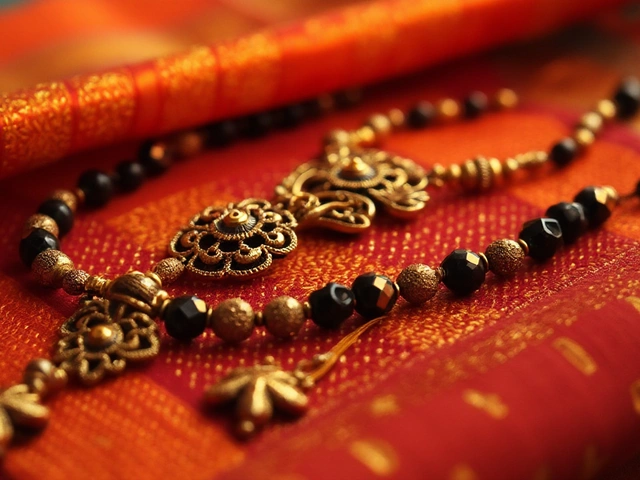You know what’s wild? A single vintage brooch tucked away in your grandma’s dresser can fetch hundreds, sometimes thousands, online. The thrill isn’t just about the money; it’s about finding someone who’ll treasure that unique piece as much as you (or grandma) did. The real kicker is figuring out the best site to sell vintage jewelry so you actually get what it’s worth—and maybe dodge those internet scammers while you’re at it. The options are everywhere, from “quick cash” local groups to global luxury sites. Ready to turn that dusty stunner into serious cash? Let’s dig into what works and what’s just hype.
The Online Marketplaces: Where Vintage Jewelry Finds Serious Buyers
Online marketplaces have exploded for vintage jewelry sellers. Sites aren’t all created equal—some are modern flea markets, others feel like velvet-roped showrooms. eBay still wears the crown for sheer volume. Over 180 million buyers worldwide, and the jewelry category alone racks up billions in sales yearly. With a verified seller program for luxury goods and international shipping made easy, eBay offers a vast sandbox, but it’s also wild. You will compete with everyone, from professional dealers to folks clearing out attics. Gems, Victorian rings, and signed pieces by designers like Cartier or Trifari move well here, but you’ll want stellar product photos and airtight descriptions. That gold-filled Art Deco bracelet won’t stand out unless you tell its story in the listing.
Etsy is the cool, creative cousin. Sellers rave about how buyers come looking for “something special,” not just a steal. They care about provenance—where the piece came from, why it’s unique. Vintage jewelry on Etsy must be at least 20 years old, which weeds out the fakes you might trip over on eBay. You can create a brand vibe with your shop, build a loyal following, and list with easy-to-use tools. You need to handle your own customer service and keep an eye on shipping and returns, but the seller fees are predictable. If your finds are quirky, artistic, have gems, or rare design features, Etsy shoppers will pay extra for personal touches—gift wrapping, free appraisals, handwritten notes. I met a seller who moves over $3,000 worth of vintage jewelry monthly, just by styling her pieces on live models for her product photos.
If you’re aiming high—think diamond brooches, signed pieces from the 1920s, or Rolex watches—Chrono24 and 1stdibs are where luxury lives. 1stdibs is invite-only, and their vetting is tough. They ask for past sales, authenticity records, and sometimes even interviews. It’s a pain but means buyers spend crazy amounts with confidence: a 1935 Cartier bangle recently closed for $18,000, and mid-tier pieces easily fetch thousands. 1stdibs and similar platforms typically get a commission of 15%, but their average sale price makes that worth it if you’ve got the goods. For fine jewelry, authenticity paperwork and great provenance stories matter—a hand-written letter from your great aunt adds value. There’s also The RealReal, focused on authenticated luxury consignment. They do the legwork, like photography and shipping, but keep a slice of each sale.
Outside these big players, Facebook Marketplace, Craigslist, and niche forums still matter for local quick sales, especially for lower-priced or “everyday” vintage. The risk is higher: you get low-ballers, time-wasters, or, in rare cases, people who ghost you entirely. But cash is literally in your hand, and you avoid shipping headaches. I once sold a set of 1970s silver bangles on Facebook to a local collector in less than a day. Keep your wits sharp: never meet buyers alone, and always check seller reviews where available.
How to Choose the Best Site for Your Jewelry: Compare, Don’t Gamble
No single marketplace fits all kinds of vintage jewelry. Picking the wrong one can mean the difference between a quick sale and a piece that sits forever, gathering digital dust. The best site depends on what you’re selling, how much time you have, and how comfortable you are navigating policies and buyers. Here’s a breakdown that’ll spare you weeks of trial and error:
- eBay: Go here for high-traffic, all-categories reach. Best for mid-range or rare collectibles, like signed brooches, period costume jewelry, or gold pieces. Watch out for price undercutting—auctions can go lower than you want, but well-crafted Buy It Now listings can fetch higher returns. Use PayPal or eBay’s payment platform for buyer guarantees.
- Etsy: Choose Etsy for artistic, handmade, or special provenance jewelry. Pieces with a good story, photos with personality, and detailed crafting info sell well. Niche subcategories (Art Deco, retro-modern, mid-century) are hot. You build a brand but must do your own marketing to stand out.
- 1stdibs/The RealReal: Stick with these for investment-grade jewelry—real gemstones, signed designer work, or anything with provenance. It takes effort and patience to pass their approval, but you’ll earn higher-than-average sale prices if you get accepted.
- Facebook Marketplace/Local groups: Perfect for lightweight, lower-value vintage jewelry or when you want cash today. Vet buyers, use secure locations, and always get payment before handing over your treasure.
Marketplace support and security policies matter. Sites like eBay and Etsy have robust dispute resolution—good news if there’s ever a problem with payment or authenticity claims. Chrono24 holds funds until buyers confirm delivery, which seriously protects sellers. Instagram sales are trending but beware: scams are rising, and there’s less recourse if the buyer disappears. Always keep transaction records, photos, and—even better—a quick video showing the jewelry’s condition and date for proof.
Some numbers to help you weigh options: Check the average commission rates, which drastically impact your payout. Here’s a table comparing platform costs as of Spring 2025:
| Site | Average Seller Fee | Verification/Authentication | Payout Speed |
|---|---|---|---|
| eBay | 11-13% | Optional (Luxury Program) | 1-3 Days |
| Etsy | 6.5% + Listing/Payment Fees | Self-verified (with complaints review) | 3-5 Days |
| 1stdibs | 15% | Strict/Professional Appraisal | 7-10 Days |
| The RealReal | 15-30% | In-house Authentication | 14+ Days |
| Facebook/Local | Varies (often 0%) | No (Trust-based) | Same Day |
Platforms with expert appraisal (like 1stdibs and The RealReal) are slower, but your payout is typically highest if your item is rare or in demand. For quick flips, eBay and Etsy let you control pricing and speed. With luxury or signature pieces, unexpectedly high-value appraisals can make patience pay off big-time.

Tips for Getting the Best Price: Preparation Pays Off
If you want to get the highest price, it’s not just about picking the platform. There’s a bit of work you need to do before you even snap a photo. Research is your best friend. Start by verifying what you have—makers, metal content, gemstones, hallmarks. Plenty of pieces look old but are 1980s knockoffs; buyers on premium platforms will spot that in seconds. Use a jeweler’s loupe or a decent smartphone camera with zoom to check for stamps like “14k,” “Sterling,” “Plat,” or designer hallmarks (think “Tiffany & Co.” or “Trifari”).
If you’re uncertain, visit a local jeweler for an appraisal or try reputable online services like GIA (Gemological Institute of America). Having a professional report boosts buyer trust and value, especially on high-profile sites. Clean your jewelry gently—no harsh chemicals, just mild soap and a soft brush. Sparkle goes a long way in photos.
Your photos are everything. Use natural light, no harsh shadows, and take multiple angles, including close-ups of any hallmarks, flaws, or unique features. Buyers decide in a few seconds, and clear images can make even a modest brooch fly off the virtual shelf. Add an image with the piece in your hand or next to a coin for scale. Don’t doctor the images; authenticity always beats gloss for vintage buyers.
Descriptions must be detailed and honest. List size, age, maker, metal, stones, condition, and any history you know. Even a quirk—"tiny dent on the backside from Aunt Rita’s wild 1962 wedding"—adds charm and transparency. Use specific words: “Art Deco enamel bangle, 1930s, adjustable, slight tarnish, no missing stones.” Google keywords that match your item so buyers can find you. For special pieces, drop the designer name up front and include historic tidbits (“This 1954 Monet bracelet is similar to those worn on the set of ‘Mad Men’—see reference photo!”).
Price research is crucial. Hunt down completed sales in your item’s category—not just wild asking prices. eBay’s “sold” filter and Etsy’s sale histories are goldmines. Adjust for your item’s condition and aim 5-10% above your lowest acceptable price to allow for offers. If you’re still unsure, list as an auction with a reserve (minimum price) so the market decides without risking a loss. Fixed-price listings with “Make Offer” options work well for unique or high-end items; you attract serious buyers who want to negotiate, not just bargain-seekers.
Packaging and shipping are where many sellers trip up. Use padded mailers or small boxes, always with tracking, and spring for signature confirmation on anything over $500. Photograph your item as you pack it—this is your proof if there are disputes. I always add a handwritten thank you—buyers mention it in reviews, and repeat business is real.
Red Flags, Success Stories, and Choosing What Works for You
Scams have gotten clever. If you get an offer too good to be true or weird requests like sending money “for shipping,” step away. Marketplace platforms rarely ask for payment outside their system. Watch out for buyers who suddenly “can’t pay by PayPal” or ask to move the deal to another site. Stick to official channels. Always check buyer feedback and trust your gut—if Bruno could sniff out scammers, I’d have him vet every offer.
Return policies differ by platform; eBay and Etsy encourage buyers to return items for almost any reason, so honesty and detailed listings save your skin. High-end consignment sites handle authentication and returns, but your payout is slower. Some sellers go hybrid, listing first on luxury sites, then moving to eBay or local groups if nothing happens.
One success story: I helped a friend sell her 1940s gold and garnet ring on Etsy. We researched the exact style, matched it to old catalogs, and wrote up the most detailed story possible. The buyer wasn’t just after a ring—they messaged with family memories and photos of heirlooms from the same decade. That emotional connection is what you want. She sold it for double what similar pieces got on eBay, even after fees.
Another seller I know got $5,000 for a Tiffany necklace through The RealReal, with all authentication handled. But for her collection of fun 1980s costume earrings, eBay and local groups did better—less payout per item, but her listings flew off the shelves.
No single answer fits everyone. If you’re clearing out a collection, try a little on each platform and track what works. For your best, truly rare pieces, go for sites with strict vetting, even if it takes a little longer. Everyday fun vintage? Flip it fast and locally. And remember—great stories and transparency usually beat big names alone.



